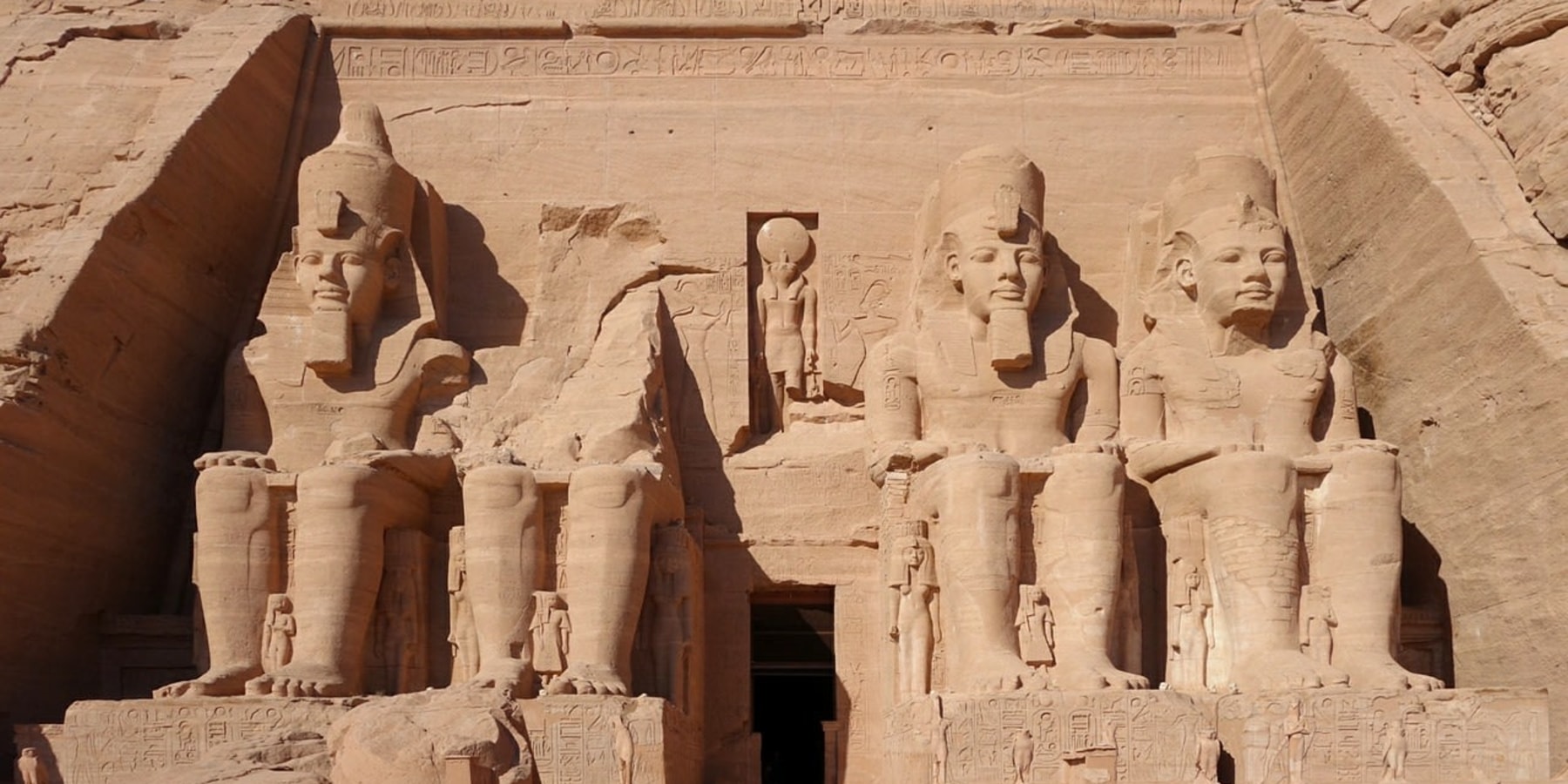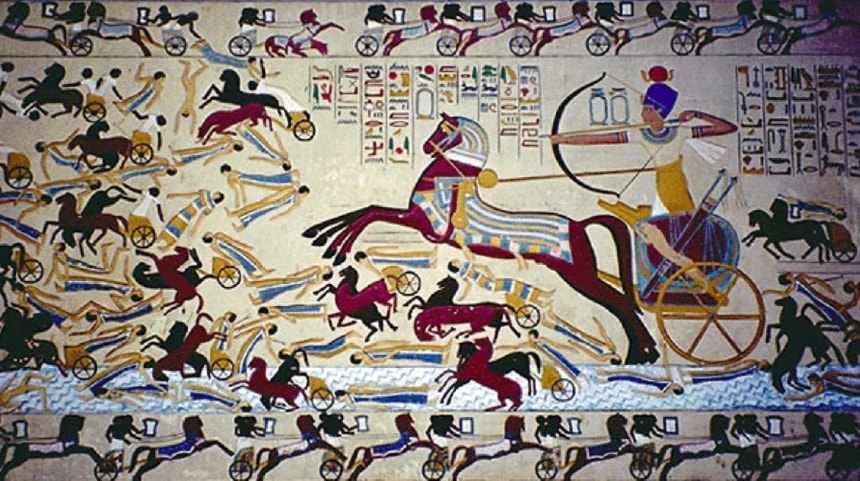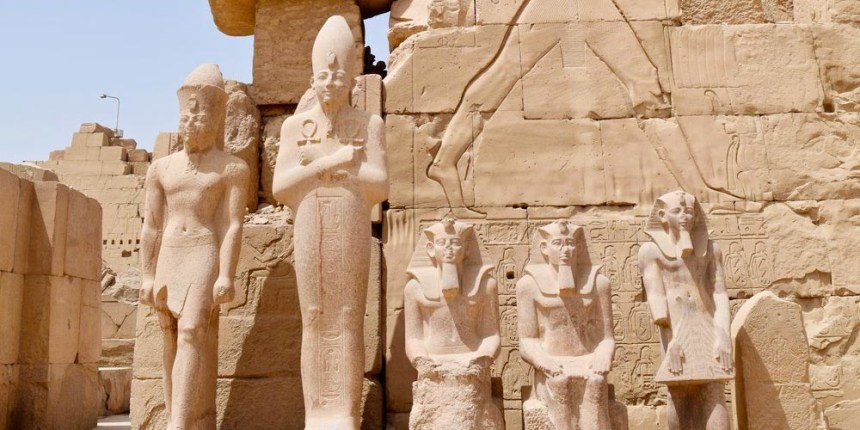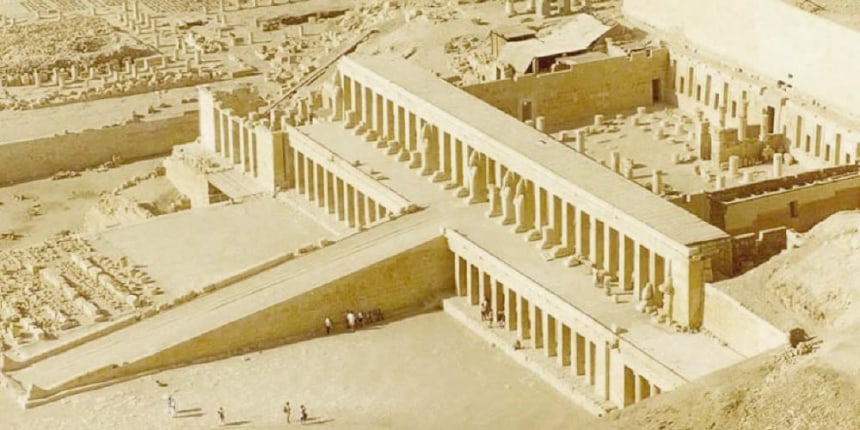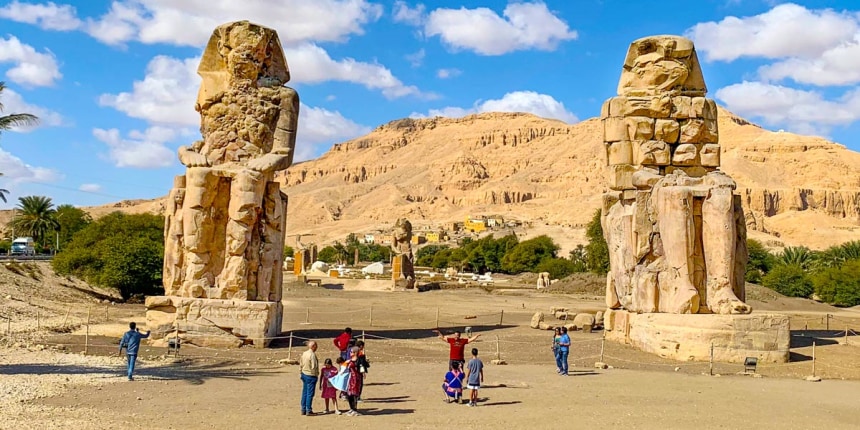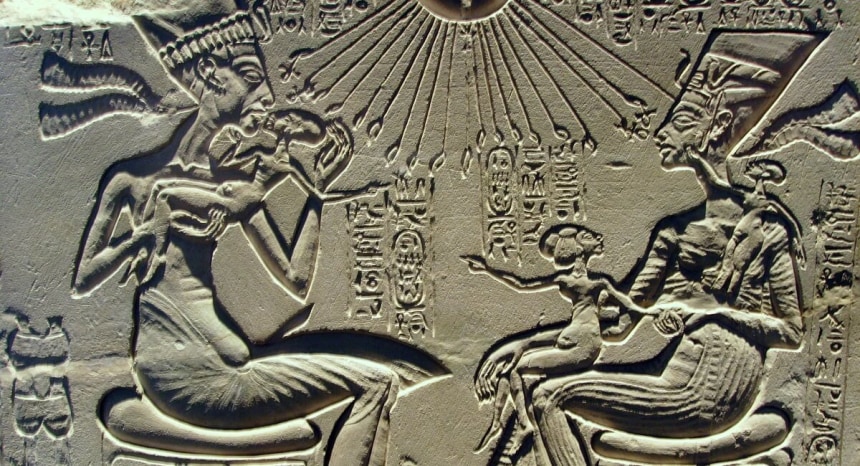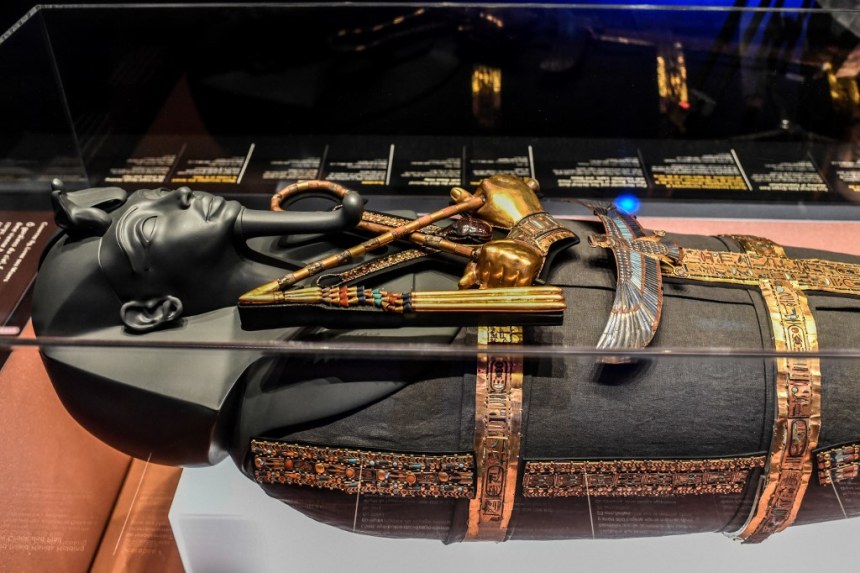
The New Kingdom Egypt
During the Second Intermediate Period (1650–1550 BC), Egypt was weakened by the immigration of the Hyksos people from the east. They established a dynasty in Lower Egypt and the Nile Delta, keeping the Nile Valley divided for several centuries until Ahmose I was finally able to establish the 18th dynasty that ruled over all of Egypt, beginning the New Kingdom period in 1550 BC.
The Beginning of the New Kingdom of Egypt
The true glory of the new kingdom started in the 18th century at the hands of Ahmose I ( 1550-1525 BC ). He sought to avenge his family, liberate his country from the Hyksos, and unite his country into one complete empire under the Theban rule.
He worked on restoring all of the Egyptian territories of Canaan and Nubia, create a buffer zone to prevent any future invasions and put the unified country of Egypt on a course into becoming a powerful empire by reorganizing the administration of management, establishing mines and trade routes, and constructing massive architecture projects.
The capital was once again moved to Thebes, a city from which the 17th dynasty originated and where the cult of the god Ammon originated. It was destined to become the most important city in Egypt during the New Kingdom.
Ahmose has constructed some important building projects similar to those built during the Second Intermediate Period, just like the great temple of Amun in Karnak.
The Pharaohs of Egypt New Kingdom
Egyptian Monarchs were used to be called 'Kings' before the New Kingdom of Egypt, but during the New Kingdom, ancient Egyptian monarchs started to be called “Pharaohs”. Here are the Pharaohs of the New Kingdom and their ruling period:
Amenhotep I
Ahmose’s son and successor, Amenhotep I (ruled c. 1514–1493 BCE), pushed the Egyptian frontier southward to the Third Cataract, near the capital of the Karmah (Kerma) state, while also gathering tribute from his Asiatic possessions and perhaps campaigning in Syria.
Thutmose I
Lacking a surviving heir, Amenhotep I was succeeded by one of his generals, Thutmose I (ruled 1493–c. 1482 BCE). He then executed a brilliant campaign into Syria and across the Euphrates River, where he erected a victory stela near Carchemish.
Hatshepsut and Thutmose III
At Thutmose II’s death, his queen and sister, Hatshepsut, had only a young daughter; but a minor wife had borne him a boy, who was apparently very young at his accession.
Hatshepsut became the dominant partner in a joint rule that lasted until she died in about 1458 BCE; there are monuments dedicated by Hatshepsut that depict both kings.
She is one of the most successful pharaohs in ancient Egyptian history and the longest-reigning female pharaoh of Egypt. She sent an expedition to the land of Punt, which later became a trade partner.
Thutmose III ( 1479–1425 BC )
He expanded the Egyptian Empire to the highest levels of power and wealth. He achieved great success, making it easy for all the future generations of pharaohs to drive this empire into true greatness. His army was also highly skilled and powerful, as shown in the battle of Megiddo.
Amenhotep II (ruled c. 1426–1400 BCE)
Amenhotep II set out on a campaign to an area in Syria near Kadesh, whose city-states were now caught up in the power struggle between Egypt and Mitanni; Amenhotep II killed seven princes and shipped their bodies back to Egypt to be suspended from the ramparts of Thebes and Napata.
Thutmose IV
Amenhotep II’s son Thutmose IV (ruled 1400–1390 BCE).
Amenhotep III
Thutmose IV’s son Amenhotep III (ruled 1390–1353 BCE) acceded to the throne at about 12. He soon wed Tiy, who became his queen.
Amenhotep III sponsored building on a colossal scale, especially in the Theban area. At Karnak, he erected the huge third pylon, and at Luxor, he dedicated a magnificent new temple to Amon.
The king’s own mortuary temple in western Thebes was unrivalled in its size; little remains of it today, but its famous Colossi of Memnon testify to its proportions. He also built a huge harbour and palace complex nearby.
Amenhotep IV (Akhenaton) ruled 1353–1336 BCE
Akhenaten became the pharaoh of Egypt, and after getting married to Nefertari, he relocated the new capital to Amarna. He dedicated it to the god of Aten, and he also forbade references to all of the other deities.
Tutankhamun 1332 – 1324 BC
Tutankhamun became the ruler of Egypt, but he died in 1323 B.C when he was just 19 years old. He was laid to rest in the Valley of the Kings.
Ay and Horemheb
Tutankhamun’s funeral in about 1323 BCE was conducted by his successor, the aged Ay (ruled 1323–1319 BCE), who in turn was succeeded by Horemheb. The latter probably ruled from 1319 to 1292 BCE, but the length of his poorly attested reign is not certain.
The Pharaohs of the Nineteenth Dynasty of Egypt new Kingdom
The Nineteenth Dynasty of Egypt is classified as the Second Dynasty of the Ancient Egyptian New Kingdom period, lasting from 1292 BC to 1189 BC. The 19th Dynasty and the 20th Dynasty furthermore together constitute an era known as the Ramesside period. This Dynasty was founded by Vizier Ramesses I, whom Pharaoh Horemheb chose as his successor to the throne.
Ramesses I (or Ramses) was the founding pharaoh of ancient Egypt’s 19th Dynasty. (ruled 1292–90 BCE).
Seti I (ruled 1290–79 BCE) was a successful military leader who reasserted authority over Egypt’s weakened empire in the Middle East.
Ramses II
Well before his death, Seti I appointed his son Ramses II, sometimes called Ramses the Great, as crown prince. During the long reign of Ramses II (1279–13 BCE), there was a prodigious amount of building, ranging from religious edifices throughout Egypt and Nubia.
The king had an immense family by his numerous wives, among whom he especially honoured Nefertari. He dedicated a temple to her at Abū Simbel, in Nubia, and built a magnificent tomb for her in the Queens Valley.
Merneptah (ruled 1213–1204 BCE)
He was the thirteenth son of Ramesses II, only coming to power because all his older brothers had died.
Several of Merneptah’s inscriptions, of unusual literary style, treat an invasion of the western delta in his fifth year by Libyans, supported by groups of Sea Peoples who had travelled from Anatolia to Libya in search of new homes.
The Egyptians defeated this confederation and settled captives in military camps to serve as Egyptian mercenaries.
Last years of the 19th dynasty
Upon the death of Merneptah, competing factions within the royal family contended for the succession. Merneptah’s son Seti II (ruled 1204–1198 BCE) faced a usurper, Amenmeses, who rebelled in Nubia and was accepted in Upper Egypt. His successor, Siptah, was installed on the throne by a Syrian royal butler, Bay, who had become chancellor of Egypt.
The Twentieth Dynasty of Egypt new kingdom
The Twentieth Dynasty of Egypt is the third and last dynasty of the Ancient Egyptian New Kingdom period, lasting from 1189 BC to 1077 BC. The 19th and 20th Dynasties furthermore together constitute an era known as the Ramesside period.
Capital of Egypt New Kingdom
The capital of Egypt new Kingdom was at Thebes, which is called “Luxor” today, where the great temples of Karnak and Luxor were built, and the ancient Egyptian pharaohs were buried in the Valley of the Kings was mainly during the reign of Thutmose I.
The rulers of the 19th Dynasty established an administrative capital near their home in the Delta, but Thebes remained an important center for religion & culture.
King Akhenaten, in 1353 B.C, moved the capital to be in Amarna, but Horemheb relocated the capital back to Memphis in 1319 B.C.

